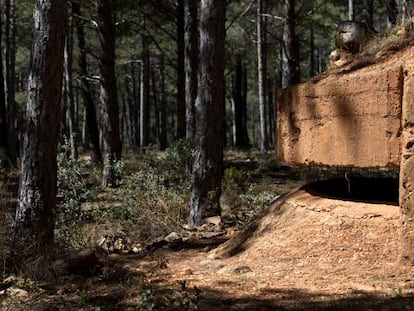Only daughter of Spanish dictator Francisco Franco dies, aged 91
Carmen, who died on Friday in Madrid after a long illness, defended her father's legacy until the very end
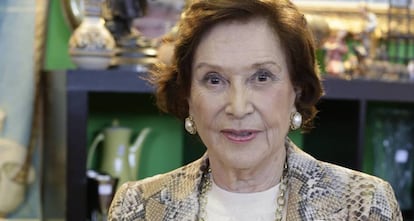
The only daughter of former Spanish dictator Francisco Franco, María del Carmen Franco y Polo, died this Friday at her home in Madrid from terminal cancer at age 91, according to her grandson Luis Alfonso de Borbón and her official biographer, the journalist Nieves Herrero. In a message on the social media platform Instagram, Alfonso de Borbon announced “God has taken Man [her nickname] (RIP) but she has not gone: she will be forever in my heart.”
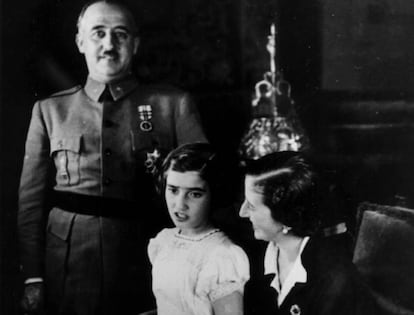
Marìa del Carmen Franco y Polo was born in Oviedo on September 18, 1926, two and half years into the marriage of her parents, María del Carmen and the dictator Franco. She studied for her high school leaving exam with a tutor but never took the official exams. She had a peripatetic childhood as her father moved to different military bases across Spain. When Franco was named chief of the Madrid Central Command in 1935, the family moved to the Spanish capital but a few months later they moved again to the Canary Islands out of fear of a possible assassination attempt. There she lived a quiet life which she was never to entirely abandon.
At home, Carmen was called Nenuca and was also known as Morita. Her father adored her and there was mutual love and affection, according to her statements to North American historian Stanley Payne and journalist Jesús Palacios which were recorded in a her memoir Franco, my father, published in 2008.
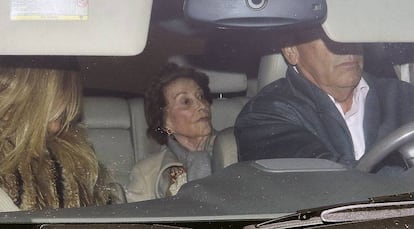
In July 1936, Franco staged a coup – a move that would usher in the Spanish Civil War and lead to a 36-year-long dictatorship. From this point on, Nenuca would be known in public as Carmencita. On the day of the uprising, Franco, fearing for the life of his wife and child, sent them both on the German ship Waldi from Las Palmas to the French port of Le Havre. They stayed in France until September, where she was known as María Teresa Martínez-Valdés.
When she returned to Spain, after living a short time in two palaces, one in Salamanca and another in Burgos, the family moved to Madrid, taking up residence first in the Viñuelas castle and later in the El Prado palace where she lived from March 1940 until the death of Franco in 1975.
In April 1950, Carmen married Cristóbal Martínez-Bordiú, marquis of Villaverde, with whom she had seven children.
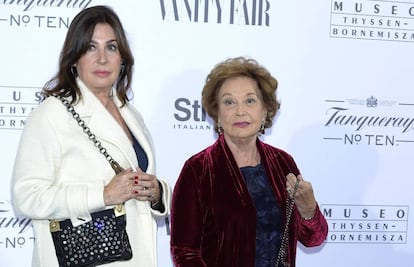
This past summer, the daughter of Franco announced she had terminal cancer. She continued in her role as the honorary president of the National Francisco Franco Foundation, created to praise the dictator who took power in 1936 after the Civil War and ruled Spain until his death.
In long conversations with her biographer Herrero, Carmencita refused to judge her father: “When they tell me he was a dictator I don't deny it but I don't like it, because it's normally said to me as an insult. But to me it doesn't sound so bad.” Up until last year, when she attended a mass in memory of her father, attendees gave the fascist salute outside the church in plain sight of the people of Madrid.
While Carmencita remained away from the media spotlight in the past year, in November 2015, in tribute to the 40th anniversary of the death of Francisco Franco, she weighed in on the controversy over whether Franco's remains should be moved from the vast Valle de los Caídos site near Madrid: “I think that the dead should be left in peace, where they are,” she said.
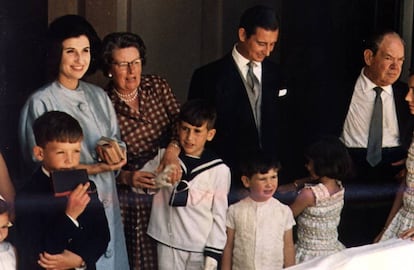
During her last months, Carmen Franco has been surrounded by her grandchildren and great-grandchildren.
With the death of María del Carmen Franco Polo, who was duchess of Franco (a title given to her by King Juan Carlos) and a Grandee of Spain, there are questions about who will inherit the family businesses and properties, many of which are in the name of Franco's sole heir. There are estimates the family fortune could be more than €500 million. The question of whether, or to whom, her titles will be passed is also to be settled.
English version by Melissa Kitson.
Tu suscripción se está usando en otro dispositivo
¿Quieres añadir otro usuario a tu suscripción?
Si continúas leyendo en este dispositivo, no se podrá leer en el otro.
FlechaTu suscripción se está usando en otro dispositivo y solo puedes acceder a EL PAÍS desde un dispositivo a la vez.
Si quieres compartir tu cuenta, cambia tu suscripción a la modalidad Premium, así podrás añadir otro usuario. Cada uno accederá con su propia cuenta de email, lo que os permitirá personalizar vuestra experiencia en EL PAÍS.
¿Tienes una suscripción de empresa? Accede aquí para contratar más cuentas.
En el caso de no saber quién está usando tu cuenta, te recomendamos cambiar tu contraseña aquí.
Si decides continuar compartiendo tu cuenta, este mensaje se mostrará en tu dispositivo y en el de la otra persona que está usando tu cuenta de forma indefinida, afectando a tu experiencia de lectura. Puedes consultar aquí los términos y condiciones de la suscripción digital.
More information
Archived In
Últimas noticias
Most viewed
- Reinhard Genzel, Nobel laureate in physics: ‘One-minute videos will never give you the truth’
- Oona Chaplin: ‘I told James Cameron that I was living in a treehouse and starting a permaculture project with a friend’
- Pablo Escobar’s hippos: A serious environmental problem, 40 years on
- Why we lost the habit of sleeping in two segments and how that changed our sense of time
- Chevy Chase, the beloved comedian who was a monster off camera: ‘Not everyone hated him, just the people who’ve worked with him’
